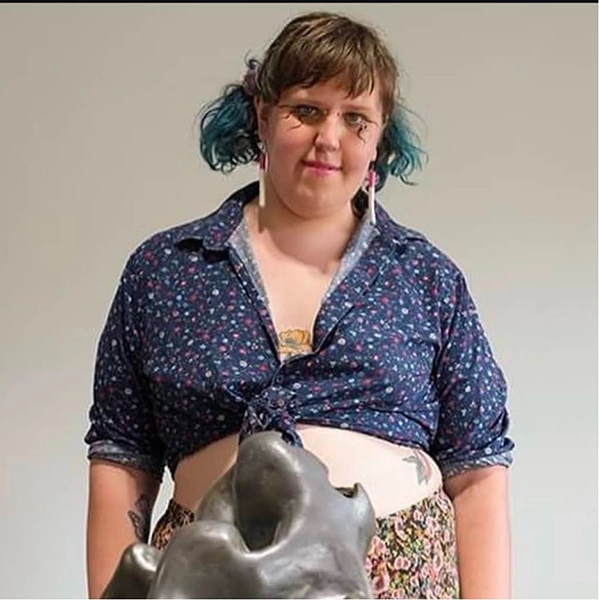Lindsay Skvarek

Area of Study
Class
Education
Lindsay Skvarek

Compilation Of The...Hits, 2022, 19x27x27in, Ceramic, Expanding Foam
Lindsay Skvarek is a ceramics and fibers artist. Her work is primarily sculptural and incorporates mixed media elements through the use of beauty supplies and mirrors. Her sculptures embody her experience as a transgender woman capturing her feeling of dysphoria and incompleteness as well as vanity and self obsession. The large blobby forms she hand builds are inspired by amoeba, other single celled organisms and distorted figures of cubism. She received a BFA in studio art as well as BA in art history from Wayne State University and is currently an MFA candidate at the University of Tennessee Knoxville.
Artist Statement
My sculptures rendered in both clay and cloth combine my lived experiences as a trans woman with imagery from microbiology and elements of community. The lumpy organic shapes are drawn from feelings of overwhelming body dysmorphia. Before transitioning, I would experience this dysphoric sensation while staring at myself in the mirror- moments spent staring at my reflection, seeing a jumbled mass of parts – as if I were one of Picasso’s late works.The individual segments seemingly welded together as I felt like I was desperately trying to stop myself from falling apart at the seams.
The blobs that comprise the surface of my ceramics and my quilts are inspired by microbiology: interlocking structures of magnified plant cells set against curvy, organic forms of Rotifers and other single-celled ciliates The eyes, mouths and lips that scatter the surface of my sculptures mimic the way organelles exist as separate, distinct blobs floating inside single celled organisms. This ties into the community aspect of my work. Each individual organ is less effective on its own: depth perception requires both eyes, communication is less effective with only hearing or speaking. Missing segments structurally weaken the entire blob just as death affects an entire community. While individual organs can exist on their own, they are weak in comparison to connected, networked cells. My work not only engages with the failures of toxic individualism but also visually evidences how networks of mutual aid and care create the possibilities for strengthening communities as a whole.
Gallery




